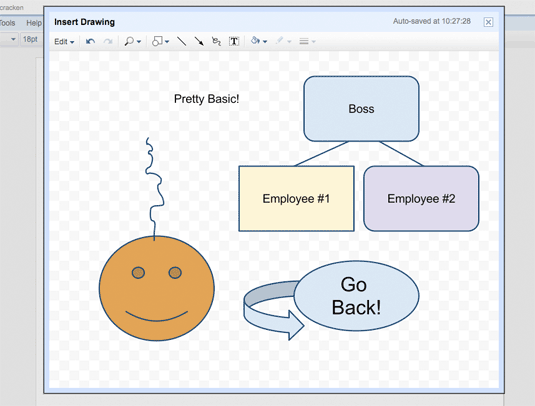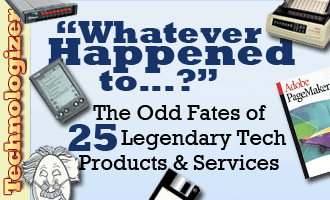 The permanent-beta culture at Google may be a source of amusement as much as information, but in the case of Google Docs, it’s probably something more: an admission that Google’s productivity suite is still missing some pretty basic tools. Once that Microsoft Office, say, has had forever. Little by little, though, Google is filling in Docs’ myriad holes. And to its credit, it generally waits to do so until it has something that works.
The permanent-beta culture at Google may be a source of amusement as much as information, but in the case of Google Docs, it’s probably something more: an admission that Google’s productivity suite is still missing some pretty basic tools. Once that Microsoft Office, say, has had forever. Little by little, though, Google is filling in Docs’ myriad holes. And to its credit, it generally waits to do so until it has something that works.
Last night, the company added drawing tools to Docs’ word processor, spreadsheet, and presentation app. They’re based on technology Google picked up from a company it acquired called Tonic Systems, and it’s not surprising that it took them this long to show up–the precision and interactivity required by graphics tools are among the hardest things to implement in a browser, at least if you try to do so without using Adobe’s Flash,
The tools you get are very basic: You can insert various canned shapes (very similar to the ones in Microsoft Office), fiddle with colors and outline widths, do simple lines and arrows, and change the order of objects. Rather than drawing directly on the page, you work in an editing window.
It’s enough to do extremely simple stuff, such as flow charts:

Or, if you’re ambitious, more elaborate drawings (but mine all look a little like digital Grandma Moses–CorelDraw this ain’t):

The list of features which these drawing tools lack is longer than the one of things it can do. There’s only one font, there’s no way to do gradations or other fancy fills, there’s no drop-shadow effect (although you can fake it), and lines don’t snap into place for convenient flowcharting. And unless I’m missing something, you can’t cut a graphic you’ve created in one Google Docs app and paste it into a different one.
But what’s there works pretty smoothly, and that’s something of an accomplishment. (Google Docs archrival Zoho still doesn’t have drawing tools in its word processor, although its presentation app sports them.) My hope is that Google’s figured out some of the challenging fundamentals of implementing drawing features, and will continue to beef ’em up until they’re at least vaguely competitive with the most important graphics tools in Office. (If you doubt that there’s still a yawning gap between the features in Google’s apps and those in Office, spend some time with Docs’ presentation tool, and then switch over to PowerPoint 2007; even with the new drawing tools, I wouldn’t build a slideshow in Google Docs unless I didn’t care if it looked like it was done in 1994.)
One of the many reasons I’m looking forward to the arrival of Microsoft’s upcoming online versions of the core Office apps is because they’ll serve as a reality check on Google’s progress to date. And drawing tools are one major area where Microsoft has a shot, at least, at delivering something meatier than what Google Docs has to offer.

 The folks at Good Old Games, or
The folks at Good Old Games, or 
 Do you, our readers, think that Technologizer is resistant to innovation? Organized and efficient? Respectful of authority? Loyal team players?
Do you, our readers, think that Technologizer is resistant to innovation? Organized and efficient? Respectful of authority? Loyal team players?




 Get ready for it. If you like any current music, it would probably be a really good idea to buy it right now. This is because Apple appears to be set to institute variable pricing beginning on April 7. The price of most popular music would go up to $1.29, including some classic tracks.
Get ready for it. If you like any current music, it would probably be a really good idea to buy it right now. This is because Apple appears to be set to institute variable pricing beginning on April 7. The price of most popular music would go up to $1.29, including some classic tracks.